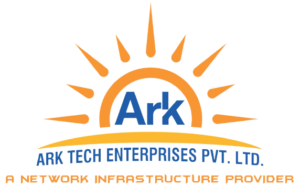FTTx Service :
FTTx (Fiber to the X) is a broadband network technology that delivers high-speed internet and other communication services to residential and commercial buildings using fiber optic cables. It encompasses various deployment methods, including FTTH (Fiber to the Home), FTTB (Fiber to the Building), and FTTC (Fiber to the Curb), among others.
For residential and commercial buildings, FTTx services offer several benefits:
- High-Speed Internet: FTTx provides faster and more reliable internet connections compared to traditional copper-based networks, enabling users to stream content, video conference, and download/upload data quickly.
- Scalability: Fiber optic networks can easily accommodate increasing bandwidth demands, making them suitable for homes and businesses with growing data needs.
- Symmetrical Upload and Download Speeds: Unlike many DSL and cable internet services, FTTx typically offers symmetrical upload and download speeds, which is crucial for activities like video conferencing and cloud-based applications.
- Reliability: Fiber optic cables are less susceptible to interference and environmental factors, resulting in a more stable and consistent internet connection.
- Future-Proofing: FTTx infrastructure is considered a future-proof solution, as it can support emerging technologies and applications that require high bandwidth.
- Multiple Services: In addition to internet access, FTTx networks can provide services such as IPTV, VoIP, and home automation, enhancing the value proposition for both residential and commercial users.
- Increased Property Value: Buildings equipped with FTTx infrastructure may see an increase in property value, as high-speed internet connectivity is a desirable feature for tenants and homeowners.
In summary, FTTx services for residential and commercial buildings leverage fiber optic technology to deliver fast, reliable, and scalable internet and communication services. This technology plays a crucial role in meeting the connectivity needs of modern homes and businesses.
Intercom Service:
Intercom services for residential and commercial buildings are communication systems that enable residents or occupants to communicate with each other and with visitors or outsiders within the building. Here’s a brief summary of intercom services for these settings:
Residential Intercom Services: Residential intercom systems are designed for homes and apartment complexes. They offer the following features:
- Security: Residential intercoms enhance security by allowing residents to verify the identity of visitors before granting them access. This is particularly useful for gated communities or apartment buildings.
- Convenience: Residents can communicate between units without physically going to another location, making it convenient for family members or neighbors to stay in touch.
- Access Control: Some residential intercom systems include keyless entry capabilities, allowing authorized individuals to remotely unlock doors for guests or service providers.
- Integration: Modern systems can integrate with smartphones and smart home devices, providing even greater control and convenience.
Commercial Building Intercom Services: Intercom systems for commercial buildings cater to businesses and organizations. They offer the following advantages:
- Security: Commercial intercoms enhance building security by monitoring access points and allowing two-way communication with individuals seeking entry.
- Visitor Management: Receptionists or security personnel can screen and manage visitors efficiently, ensuring only authorized personnel gain access.
- Emergency Communication: Intercom systems play a vital role in emergency situations, allowing for announcements, lockdown procedures, and coordination during crises.
- Access Control: Integration with access control systems ensures that only authorized employees can enter specific areas of the building.
- Efficient Communication: Intercoms facilitate quick communication between different parts of the building, increasing productivity and responsiveness.
- Visitor Records: Some systems maintain records of visitor interactions, providing a log for security and accountability.
In summary, intercom services for residential and commercial buildings offer enhanced security, convenience, and communication capabilities. They are tailored to the specific needs of each setting, whether it’s providing easy home communication or ensuring the safety and efficiency of a commercial space.
Security & Surveillance:
Security and surveillance services for residential and commercial buildings involve the deployment of technologies and systems to protect the premises, occupants, and assets from various security threats. Here’s a brief summary of these services for both settings:
Residential Security & Surveillance Services: Residential security and surveillance services are designed to provide safety and peace of mind to homeowners and residents:
- Video Surveillance: Installation of security cameras at key points around the property, both indoors and outdoors, to monitor and record activities, enhancing deterrence and evidence collection.
- Intrusion Detection: Alarm systems with sensors on doors, windows, and other entry points that trigger alerts or alarms in case of unauthorized access.
- Access Control: Systems that control entry to the property or specific areas, such as gates, smart locks, and keyless entry, often integrated with intercom systems.
- Remote Monitoring: Homeowners can remotely access security camera feeds and control various security features via smartphones or computers.
- Fire and Smoke Detection: Integrated fire and smoke detectors for early warning and emergency response.
- Home Automation Integration: Security systems can be integrated with home automation platforms to provide seamless control over security features and other smart home devices.
Commercial Building Security & Surveillance Services: Security and surveillance services for commercial buildings are more comprehensive due to the scale and complexity of these settings:
- Access Control: Sophisticated access control systems to manage entry for employees, visitors, and contractors, often with key cards, biometrics, or PIN codes.
- CCTV Surveillance: Extensive camera networks covering interior and exterior areas, monitored 24/7 for security, safety, and liability purposes.
- Integration: Integration with building automation, access control, and fire detection systems for centralized management.
In summary, security and surveillance services for residential and commercial buildings are essential for ensuring the safety and protection of occupants and assets. They encompass a range of technologies and systems tailored to the specific needs of each setting, providing both proactive deterrence and effective response capabilities.


